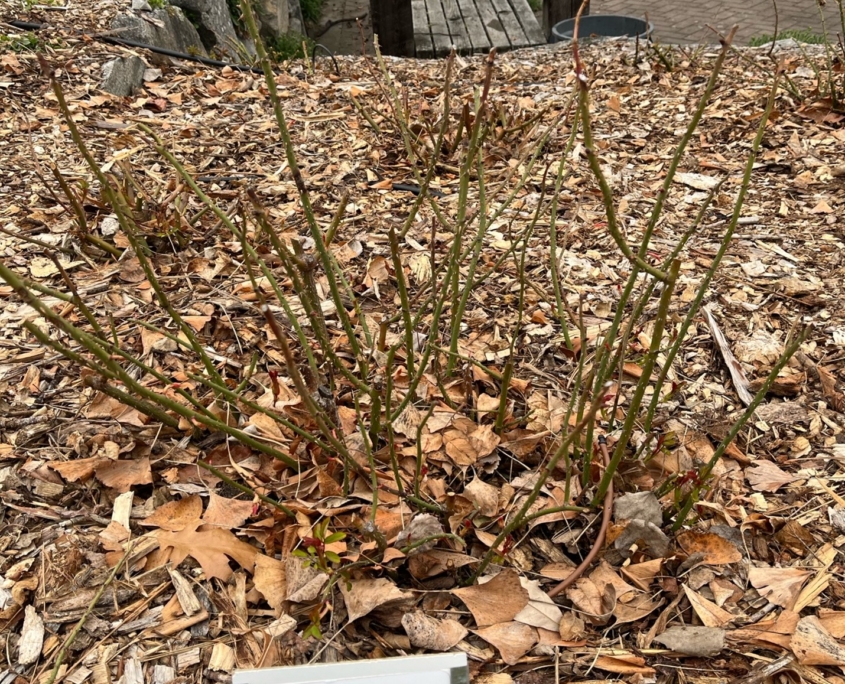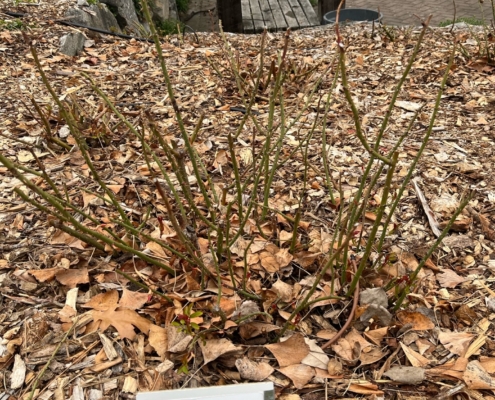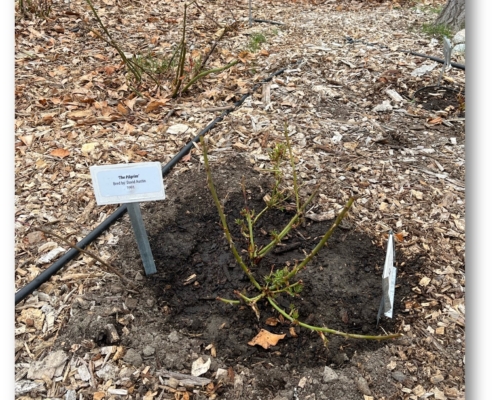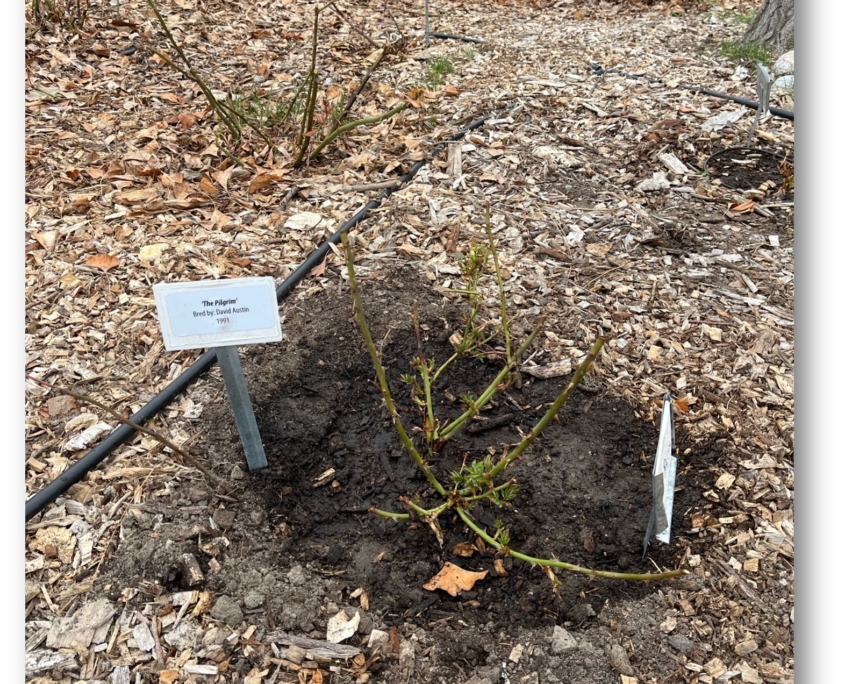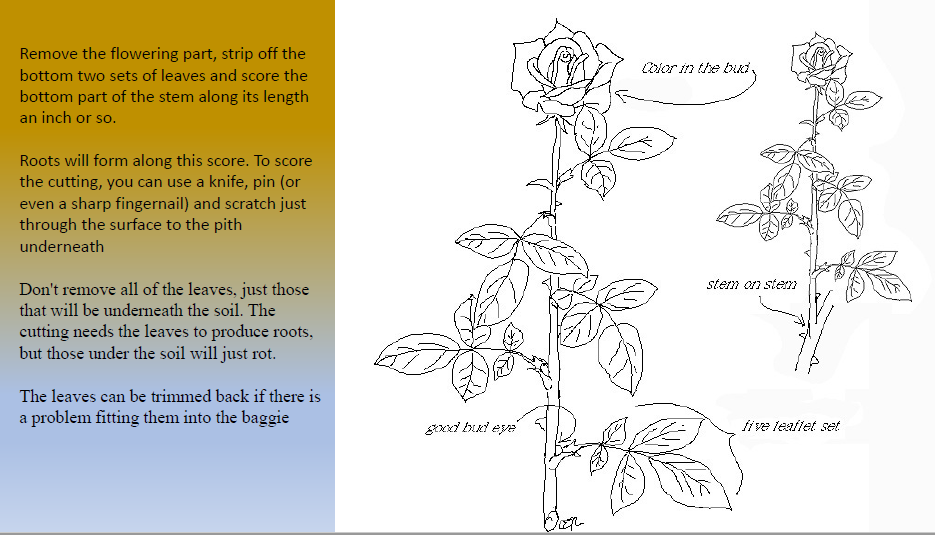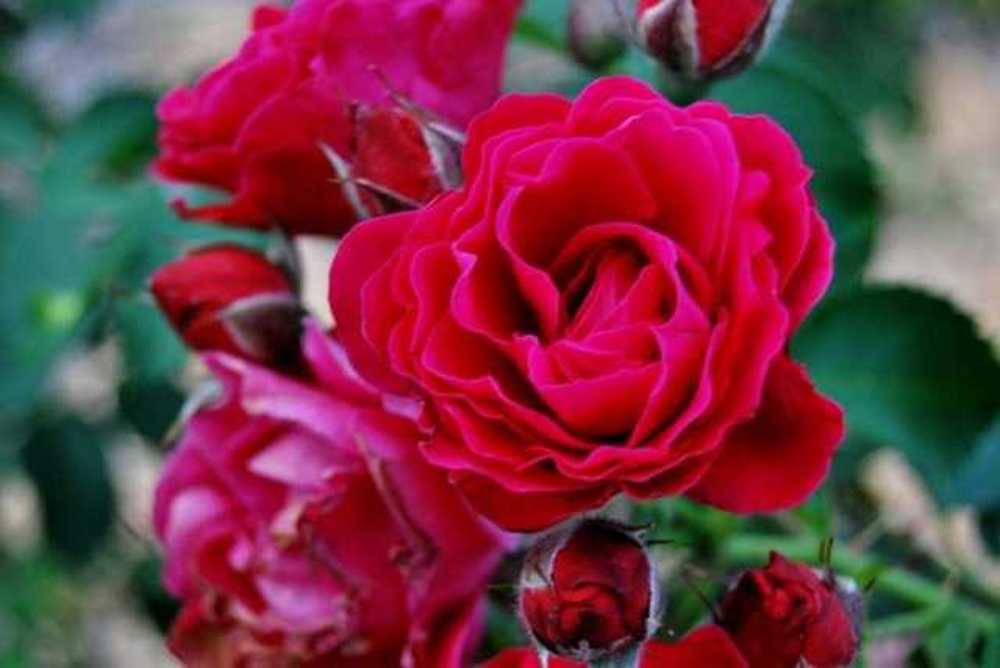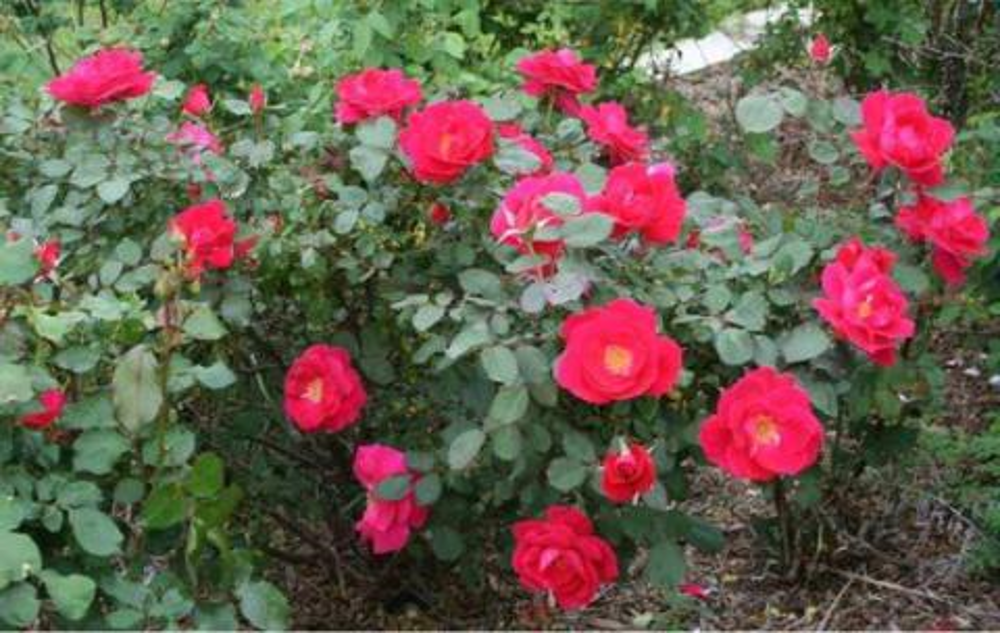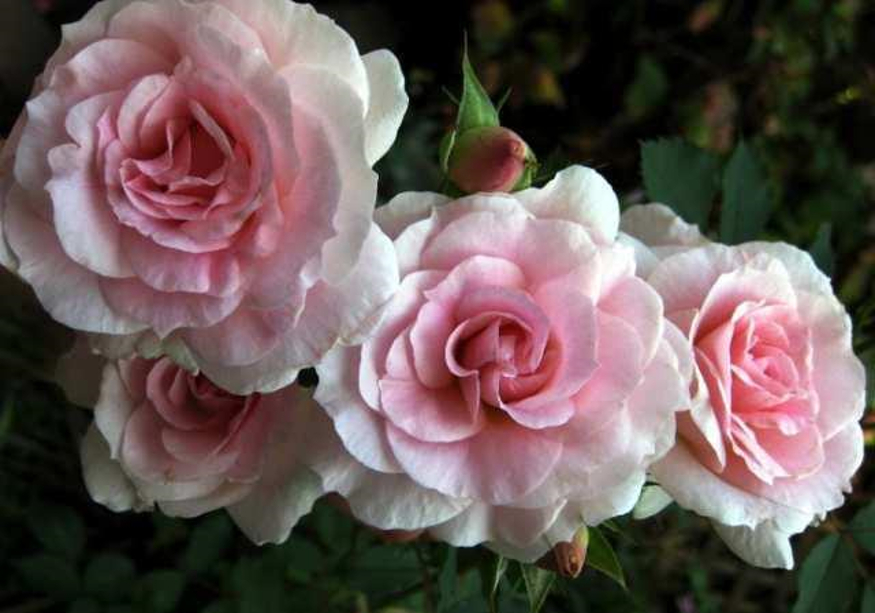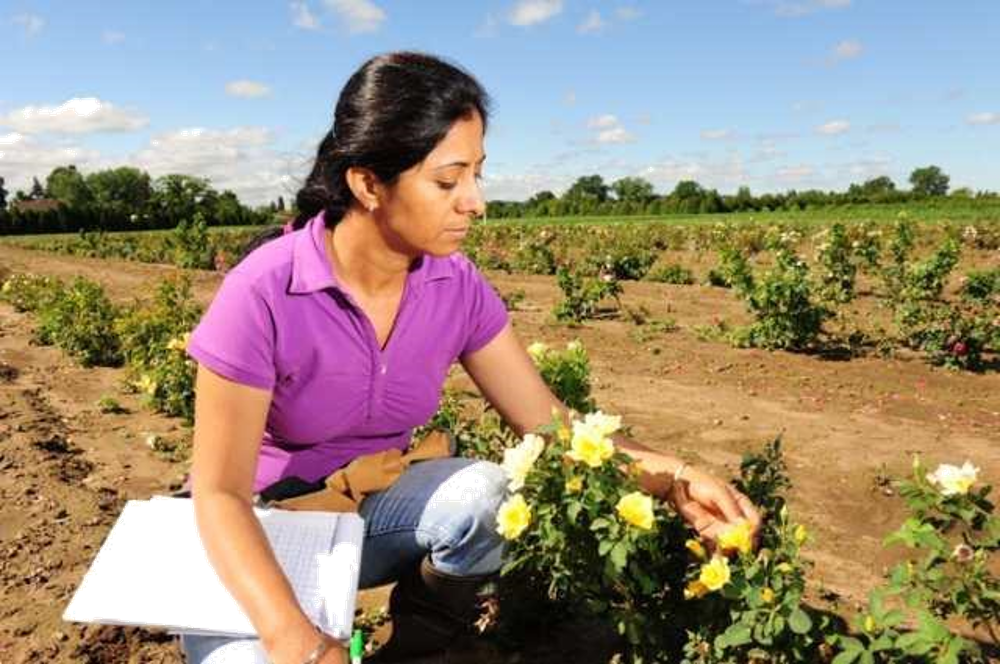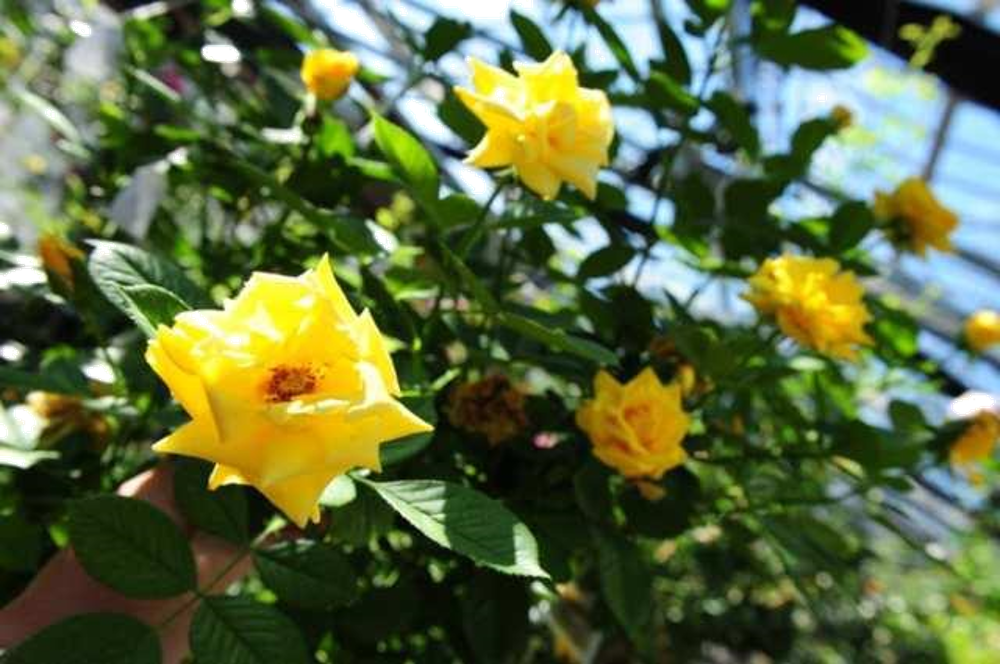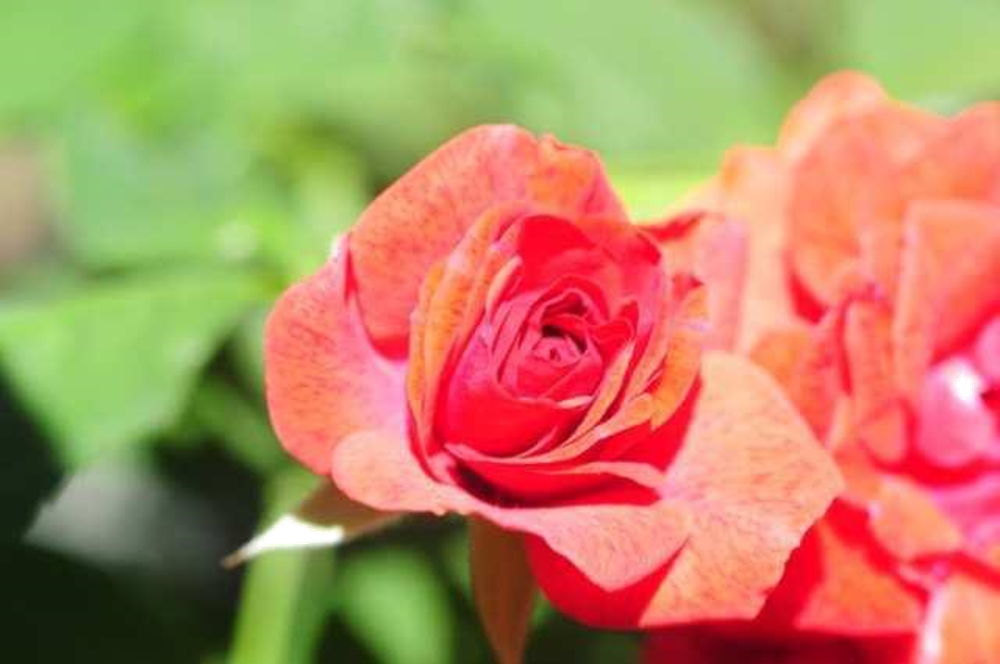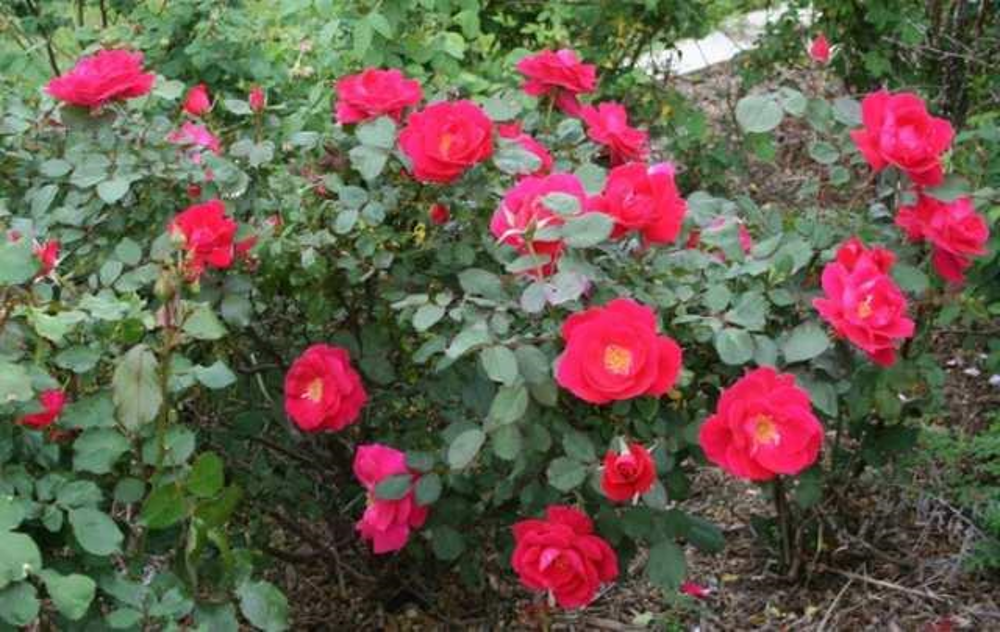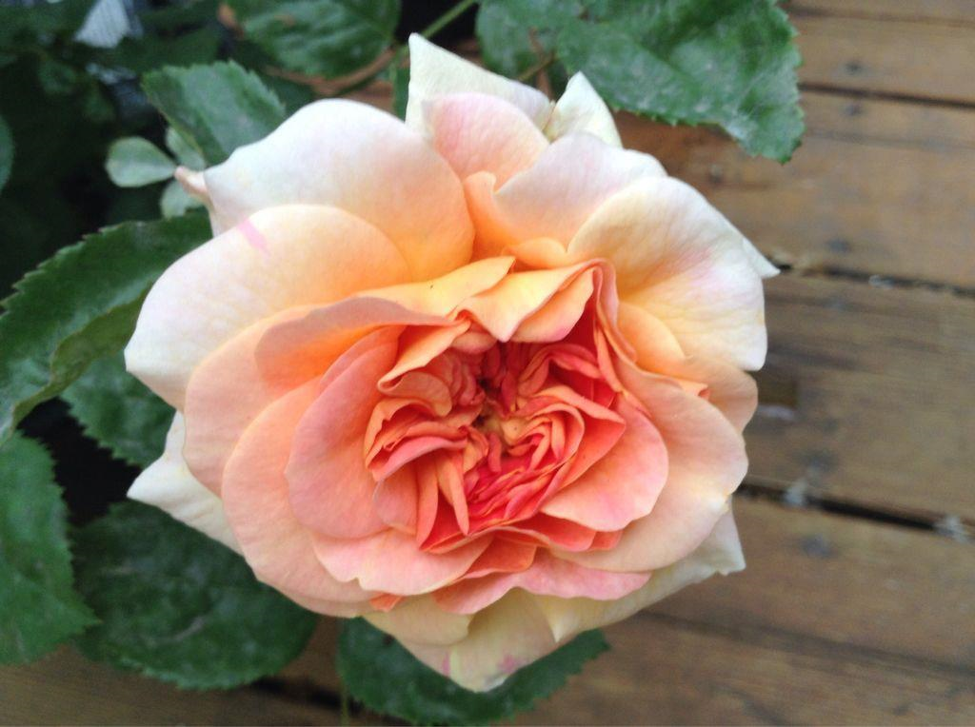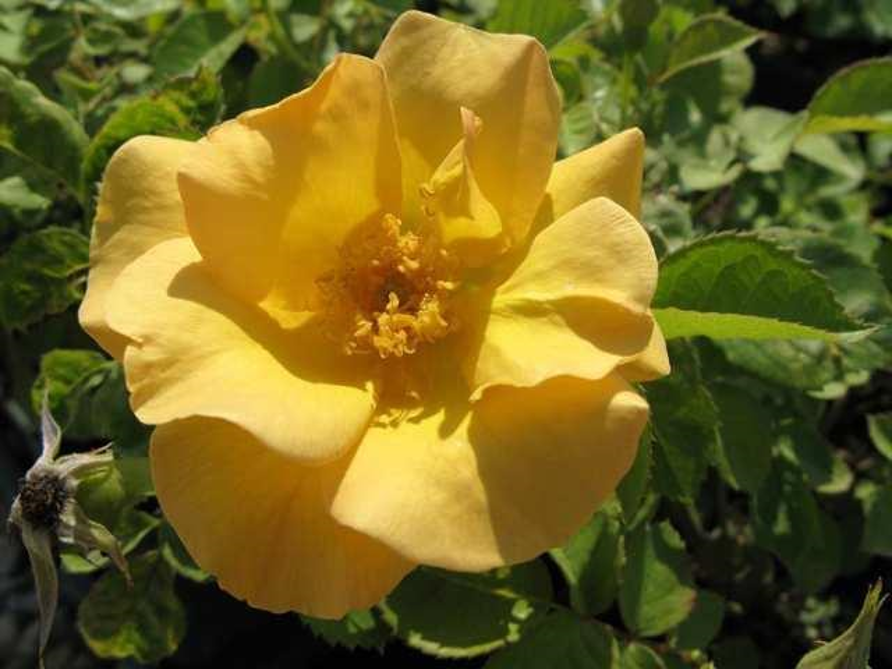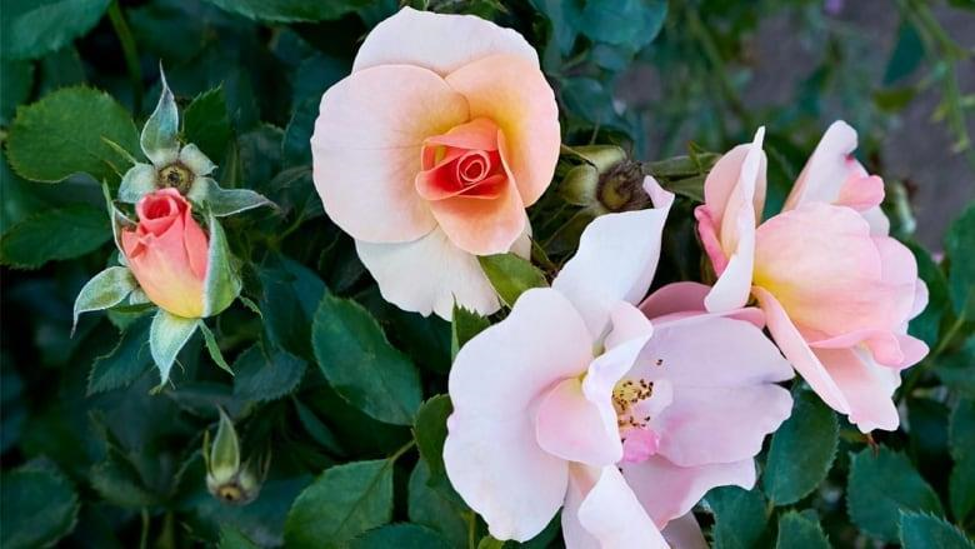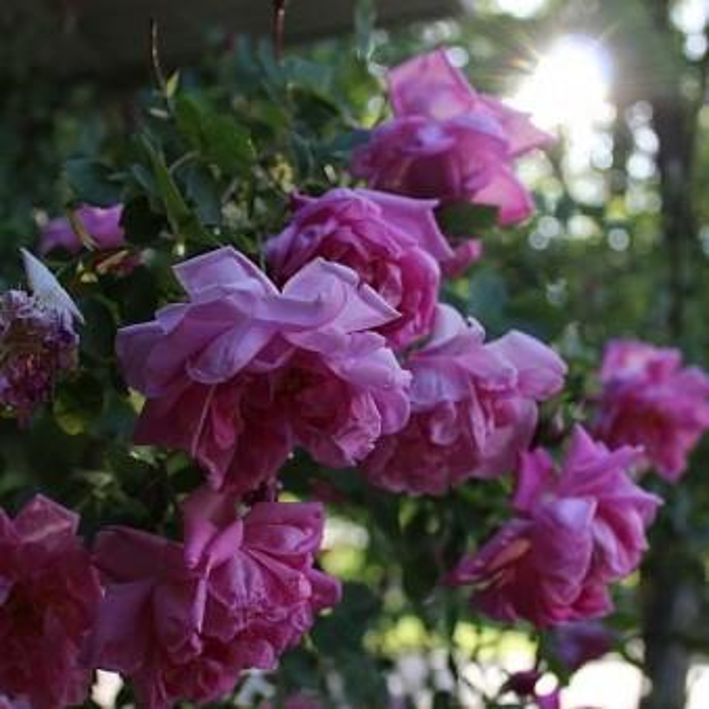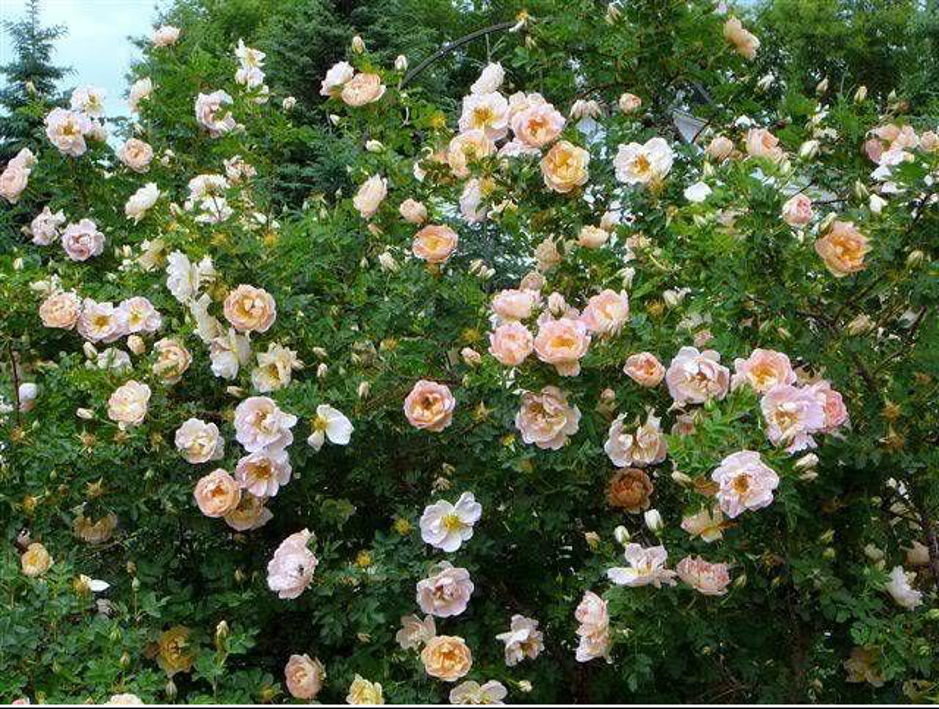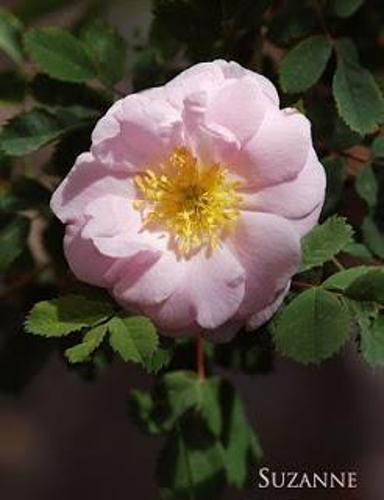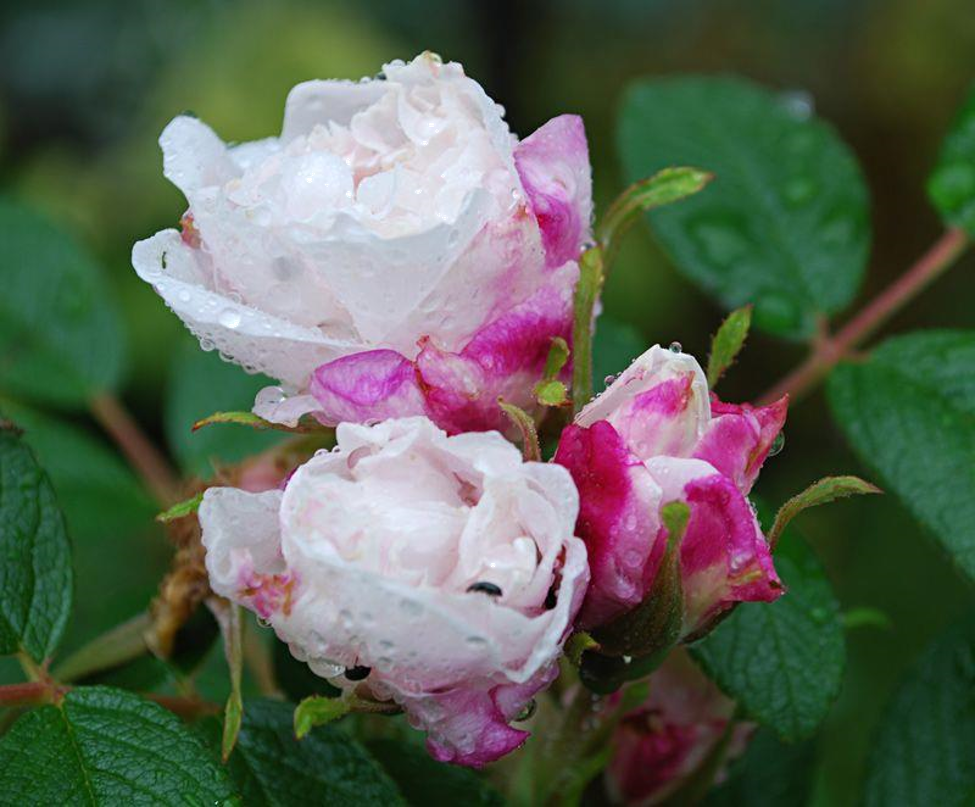Winter Rose Hardiness At Summerland Ornamental Gardens 2023/24
The winter of 2023/24 was one of extreme climate variables and temperature fluctuations. Climate change is increasingly disrupting the east west flow of the jet stream and causing it to meander north and south in a wave pattern of alternating high and low-pressure regions. This in turn, along with occasional blocking patterns allows increasingly intense outbreaks of “polar vortex” cold snaps.
The weather in both November and December 2023 was warmer than normal with high temperatures above freezing every day in December, and this trend continued through the first part of January. While most roses in the Summerland Ornamental Gardens were hardened off, they were not necessarily fully dormant. The recorded high temperature on the morning of January 10th in Summerland, was 1 C and then the temperature began to drop rapidly. By 9:00 PM on the evening of January 11th it was -20C, and by the 11:00 PM on January 12th, it was – 26.2 C, a drop of 27 degrees Celsius in less than 48 hours.
The official plant hardiness zone for both Summerland and Penticton is on the border of 6b and 7a with normal coldest winter temperatures of approximately -19C. The low temperature on January 12th is at the low end of zone 5a. Few roses, other than Rugosa Hybrids, Old Garden Roses and hardy Canadian Bred Roses are able to tolerate that temperature without serious freeze damage, or even winter kill for many Floribunda and Hybrid Tea varieties. In addition, there were two other factors at play during this polar outbreak event. As stated above, the roses were not completely hardened off as would be the norm in the Okanagan Valley in January, and the outbreak of arctic air was accompanied by winds out of the north with gusts between 40 and 60 kms per hour on January 12th.
The winter of 2022/23 also had a less severe arctic outbreak in late December with temperatures as low as -23 C between December 18th and 24th. During this period as well, there were winds of 30 to 35 kms per hour during the cold spell. This too led to severe winter damage on many of the rose plants in our collection, particularly the Hybrid Tea and Floribunda varieties. These all required very hard pruning, to the ground in some cases. This led us to mound the less hardy varieties with wood chips this past fall in order to protect more cane in the event of another cold snap.
OBSERVATIONS
All of these abnormal weather events together led to severe winter damage to roses and other plant material such as grapes, cherries peaches and other plants that are not hardy at these temperatures. This past winter, the event was extreme enough to even do damage to many of our English Roses, and even to some of our Canadian bred hardy roses. The observed damage was a bit shocking, though not severe enough to cause excessive damage that could not be dealt with a harder selective pruning.
In assessing my own roses and visiting other rose gardens nearby, it became apparent that many of the same rose varieties that we grow had differing degrees of damage due to microclimate, even though the extreme lows were the same. Cold dry wind and desiccation are as big a factor in damage to roses are the record cold temperatures. Two fellow gardeners and volunteers at the Summerland gardens live within a kilometer of my home. One gardens on an exposed bench above the Skaha Lake, the other in a very protected gully that is sheltered even in severe wind events. My own home is on an exposed knoll and very exposed to wind. My own roses were severely damaged, and I was forced to cut them back hard, three plants to the ground. I am not certain how well they will grow back. The same can be said of the gardener on the lake bench. She lost several Hybrid Tea plants, including a Peace Rose that had been in the same location for decades. The gardener in the sheltered location had little damage to her roses, most of which are young plants of David Austin English rose varieties.
The rose collections at the Summerland Ornamental Gardens consist mainly of hardy shrub roses, including many Canadian bred hardy modern roses, Old Garden Rose Varieties, Hybrid Rugosa varieties and species roses. Damage was most serious in the Hybrid Tea and Floribunda varieties that we grow, as would be expected. These had to be pruned back to below the level of the mounding. The English Rose varieties, as well as some of the other modern shrub roses had varying amounts of freeze damage requiring harder pruning than would be the norm in our zone 6b hardiness zone. Most of the Canadian bred roses had superficial to no winter damage. The Rugosa Hybrids, Old Garden Rose varieties and species roses we grow had no damage, none!
Both the City of Penticton and the Town of Oliver have rose gardens. These gardens are both largely planted with Hybrid Tea and Floribunda varieties. Many of the plants in both gardens are old plants. The Penticton Garden contains more than 200 roses. The plants there are mounded each winter to a depth of approximately 25 cm (12 in.).
Inspection of that garden this first week of April revealed that the plants all survived the winter and were budding out, though they were all pruned back to 12 cm or less, which is considerably shorter than would be the case in a normal year. The rose garden at Oliver was also mounded, but not nearly as heavily. Inspection showed that approximately 50% of the roses were dead and will have to be replaced. These plants again were old plants that have survived winters for a decade or more.
There are small collections of David Austin English Roses in both gardens, these plants all survived the cold winter in much better condition than their more tender neighbors. The English Roses in Penticton were not mounded and survived the winter in situ, as did shrub and landscape roses planted as accent plants in the border around the perimeter.
DISCUSSION
Modern rose varieties have been bred for the repeat flowering trait. This has meant using primarily repeat blooming species roses such as Rosa Chinensis, Rosa rugosa, Rosa Bracteata, etc. as well as early Tea and Hybrid Tea roses as genetic stock to breed this trait into these varieties. With the exception of Rosa rugosa, most repeat blooming roses are native to the sub-tropics. This means in general; they cannot survive sub-freezing temperatures. Thus, many repeat blooming roses in the Hybrid Tea and Floribunda classes are not cane hardy in temperatures much below -15 C. Hence the increased winter damage to these types of roses during extreme winter events such as those of the past two winters.
Many of the rose varieties in the Summerland Ornamental Gardens collections, while repeat blooming, also have genetics from hardier rose species close-up in their breeding. There has been and indeed still is a Canadian rose hybridizing tradition of combining the repeat blooming trait with excellent cold hardiness. David Austin English roses are also for the most part, significantly hardier than Hybrid Tea varieties due to the Old Garden Rose genetics close-up in the breeding of many of them. Many English Roses are cane hardy to -20 C or so and some to colder temperatures.
CONCLUSIONS AND RECOMMENDATIONS
With climate change and increasing incidents of arctic outbreaks in winter, what can rose growers do to protect plants through these events? There are several options:
Hybrid Tea, Floribunda and other tender varieties can still be grown. But do not believe the zone 5 hardiness ratings on the tags when you look to purchase these types of roses. Most are hardy to zone 6a at best, some only to zone 7. You can grow these varieties if they are planted in a sheltered location, well mounded in the fall, and planted with the graft or bud union 5 to 10 cm, (2 to 4 inches) below the soil grade. You must also accept that it is possible that you will lose some plants in the event of future severe winter weather events.
Grow hardier shrub rose varieties such as English Roses, Canadian bred hardy roses, or hardier varieties of shrub roses. Do some research on rose hardiness online on a site such as Help Me Find Roses when looking for roses you might wish to plant. Speak with rose growers in your area and ask for advice or seek out a rose society in your area. Many rose societies have web sites with information on cultivars that do well in their climate.
Grow Old Garden Roses, or Rugosa Hybrids that are iron clad hardy and proven over decades or even centuries to be hardy and beautiful garden plants. Many of these, you will have to seek out to buy from specialty online nurseries such as Fraser Valley Rose Farm in B. C., Cornhill Nursery in New Brunswick, or for those of you in the US, American suppliers such as High Country Roses, Northland Rosarium, or Freedom Gardens. These are all specialty nurseries that grow and sell many of the hardier rose varieties, including English Roses.
Below are two images of hardy English Roses, post pruning, as a visual example of how these roses faired over this past winter. The top image is The Mary Rose, the bottom one is The Pilgrim. I hope this discussion is of use to those of you who read it.
Rick Sauder, Rosarian, Summerland Ornamental Gardens. Summerland B. C.
The Simple Process of Pruning Roses
When most people think of pruning roses, they think of the ubiquitous myth related to pruning Hybrid Tea roses. That involves cutting roses back in spring to 10 centimeters (12”) and leaving only a few of the larger canes. There is nothing wrong with that method, but it is generally the method used by hard core rosarians growing tender Hybrid Tea or Floribunda type roses for large blooms or for show.
The roses in the Summerland Ornamental Gardens are all types of shrub roses. These roses are landscape plants and are meant to be hardy, easy care and to look good as a plant, rather than just a bloom producer. The primary types of roses you will see in the gardens are Canadian bred hardy shrubs, meant for the Canadian climate; David Austin English Roses, also hardy healthy shrub roses with old garden rose genetics close-up in their breeding; and finally assorted Rugosa and Old Garden Rose varieties that are often spring blooming, producing a plethora of bloom and that welcome spring with a wash of colour and fragrance.
These are all garden plants that look good interspersed with other plants, English Cottage Garden style. True, we do have several mass planted beds of roses in the Summerland Ornamental Gardens, but we also have roses in nooks and beds as landscape and accent plants.
So, now onto the simple process of pruning roses. How they are pruned depends on a few factors; how old is the plant; how big will it grow; how big do you want it to grow and how vigorous and healthy is the plant you are about to prune.
I personally have always pruned my roses using the advice of David Austin, whose English Roses are my favorite type. The roses in the Summerland Ornamental Gardens are also pruned using Mr. Austin’s method. Because English Roses are shrub roses, most shrub roses and even mature Hybrid Tea and Floribunda roses respond well to this method of pruning. Rather than re-write the book, I am sending you this link to the David Austin Roses website, titled Pruning an English Shrub Rose.
https://eu.davidaustinroses.com/blogs/news/pruning-an-english-shrub-rose
It is an excellent article written by the master who wrote the book. Pruning roses is not rocket science and in fact it is hard to make a fatal mistake. So next spring, read this article and go ahead and prune your roses with confidence and knowing they will reward you for the effort.
Cheers,
Rick Sauder
Volunteer Rosarian, Summerland Ornamental Gardens
WHEN SHOULD I PRUNE
We recommend pruning in late winter/early spring, when the first growth is beginning. This is generally between January and March. It is OK to prune earlier, but it can be more difficult to identify the less healthy stems that you will want to prune out. If you still haven’t pruned by April it is still better to do so.
HOW TO PRUNE A SHRUB ROSE
Pruning requirements vary depending on the age of your rose.
If pruned properly, your rose bush will look significantly smaller and bare. Do not be alarmed, the growth will strengthen and re-establish quickly in the spring.
Year One
We define Year One as any rose that has completed its first season of flowering.
At this stage your rose will still be establishing its roots to support growth in the future, thus only very light pruning is required.
- Step 1 – cut back the flowering shoots by 7- 12 cms and any very strong shoots that are disproportionate to the rest of the plant.
- Step 2 – the ‘four D’s’ – remove any dead, dying, damaged and diseased stems.
- Step 3 – remove any foliage that remains. This is where disease spores can lay dormant ready to challenge your plant next year.
Year Two
Your plant will still be developing its root system and will not be at its mature size or shape.
- Step 1 – cut back all stems by one third. Cut back any particularly long stems to the same length as the rest of your shrub.
- Step 2 – the ‘four D’s’ – remove any dead, dying, damaged and diseased stems.
- Step 3 – remove any foliage that remains.
Year Three
By the third year your rose will be a fully formed plant. Your choice of how much you cut back is a little more flexible. You now have the opportunity to influence the size and shape of your shrub.
Before pruning, choose from one of the following:
- For a taller shrub – cut back by less than one third.
- To maintain its current size – cut your rose back by one third.
- To reduce its size – cut back by a half or even more. This will reduce the size of the shrub without impacting the amount of flowering.
Then follow these steps:
- Step 1 – cut back all stems depending on your choice from above. Cut back any particularly long stems to the same length as the rest of your shrub.
- Step 2 – the ‘four D’s’ – remove any dead, dying, damaged and diseased stems.
- Step 3 – remove any foliage that remains.
Year Four and Beyond
To ensure your rose performs to its optimum, we recommend following the steps in Year Three.

